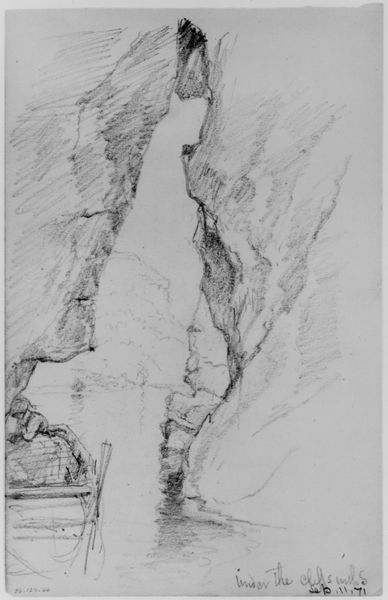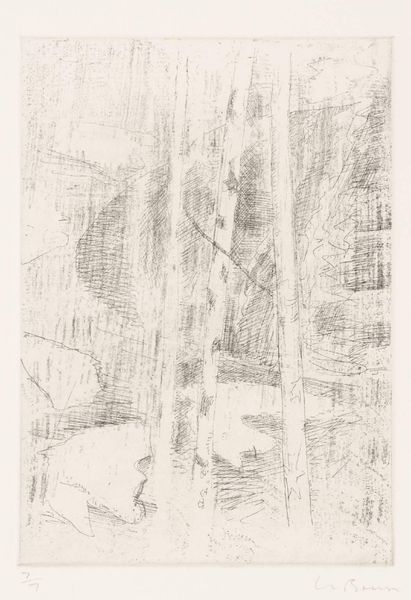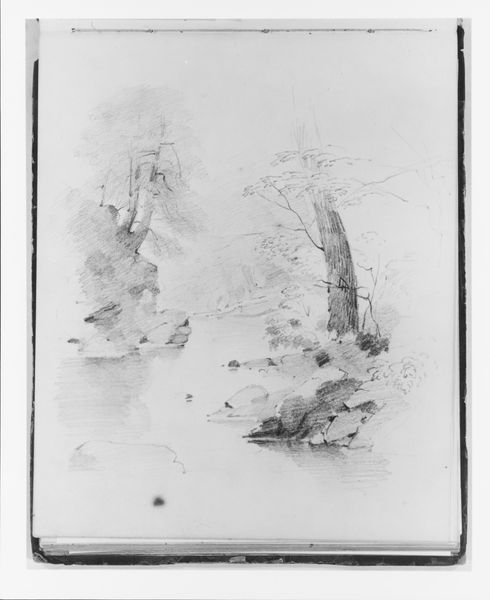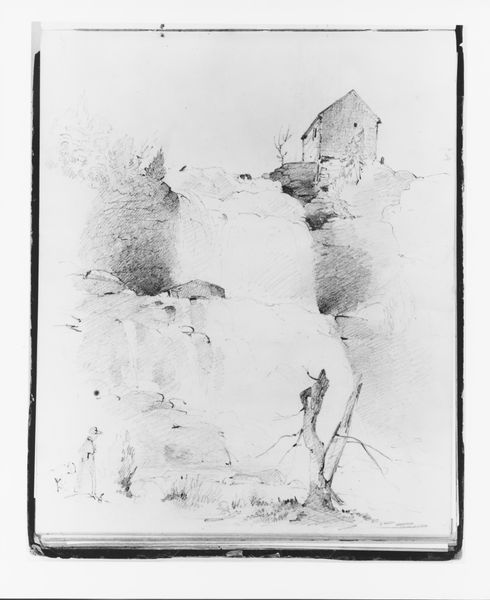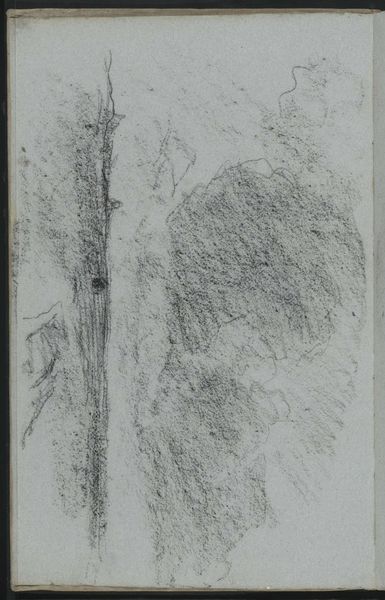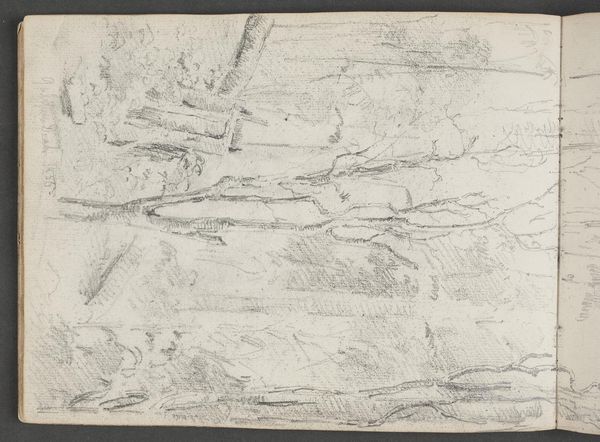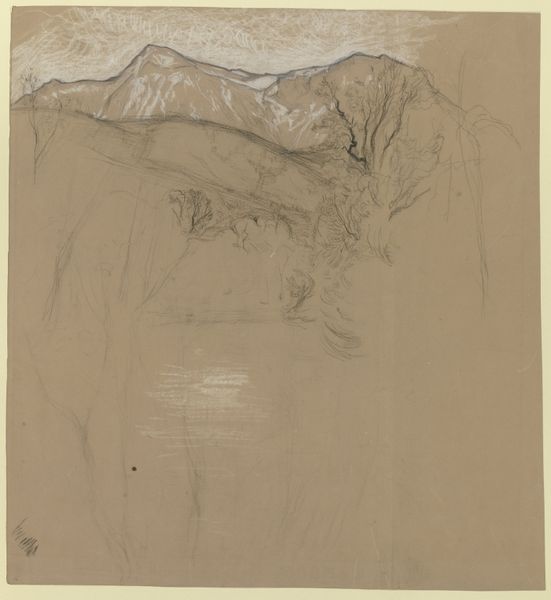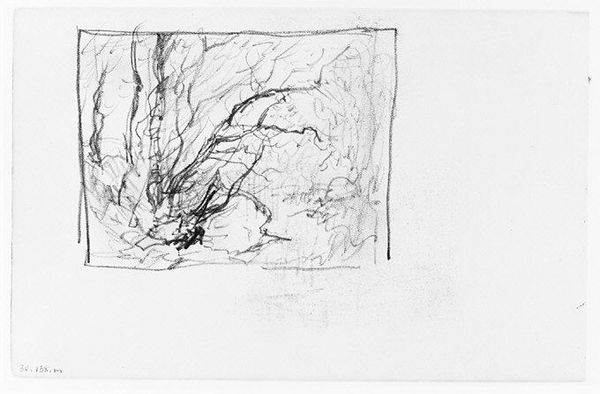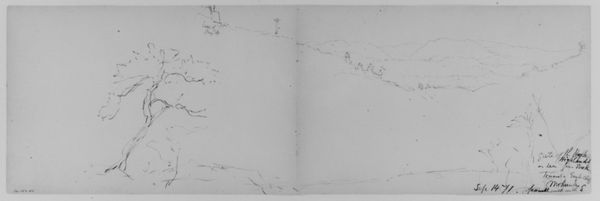
Dimensions: 5 1/2 x 8 3/4 in. (14 x 22.2 cm)
Copyright: Public Domain
Curator: The Metropolitan Museum of Art holds in its collection this evocative landscape sketch titled "Mohonk, 1871," a graphite on paper work by Daniel Huntington, likely created in 1870 or 1871. What are your initial thoughts? Editor: It has a wonderfully transient quality; the rapid strokes suggesting the ephemeral nature of a specific moment and the wilderness of the early American landscape. It feels very intimate. Curator: Huntington's inscription suggests a journey: "Half of the way to [something illegible] = the Shandaken Mts. in the distance." It’s intriguing to consider how sketches like these played a crucial role in shaping perceptions and promoting Romantic ideas about the American landscape, helping to define notions of what it meant to settle a rugged geography. Editor: Absolutely. There’s a Romantic sensibility in the artist's apparent desire to capture that awe felt when confronting raw, sublime nature. Graphite adds to the symbolic sense of lightness, emphasizing a fleeting feeling and memory. One is also made to consider the symbolic position and attitude toward this "landscape" in the social milieu of late 19th-century United States. Curator: True. And looking beyond this particular image, one could ask how Huntington's artistic representation of the landscape interacts with larger socio-political factors and artistic trends in the development of Hudson River School art. There is an artistic lineage here. Editor: We can view Huntington’s sketch within the continuum of landscape as visual shorthand—symbols that function through time to deliver a concept of wildness or of a particularly “American” identity connected to the environment. And, how the use of that symbolism effects public consciousness. The way Huntington depicts these bare trees as linear signifiers emphasizes that the essence of Romantic thought carries the burden of earlier symbol-making in paintings by Bierstadt, Cole and Church. Curator: It's also a powerful reminder of how deeply visual representation informs our sense of place and history, something particularly relevant given the Hudson River School's emphasis on the picturesque. Editor: It leaves me pondering, what will subsequent artists make of OUR era and the imagery that now informs symbol-making in contemporary consciousness? Curator: A fascinating thought to end on. Thanks for exploring this with me!
Comments
No comments
Be the first to comment and join the conversation on the ultimate creative platform.
